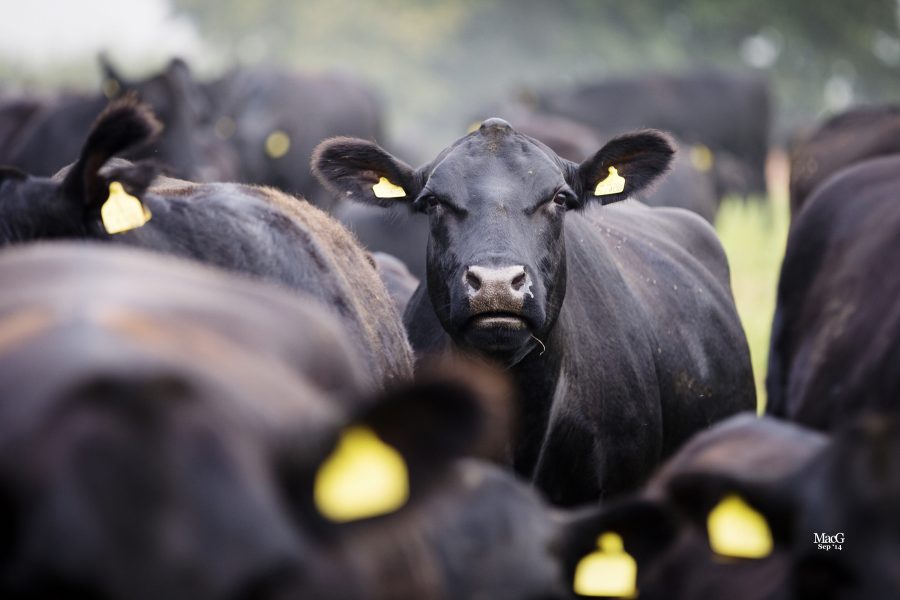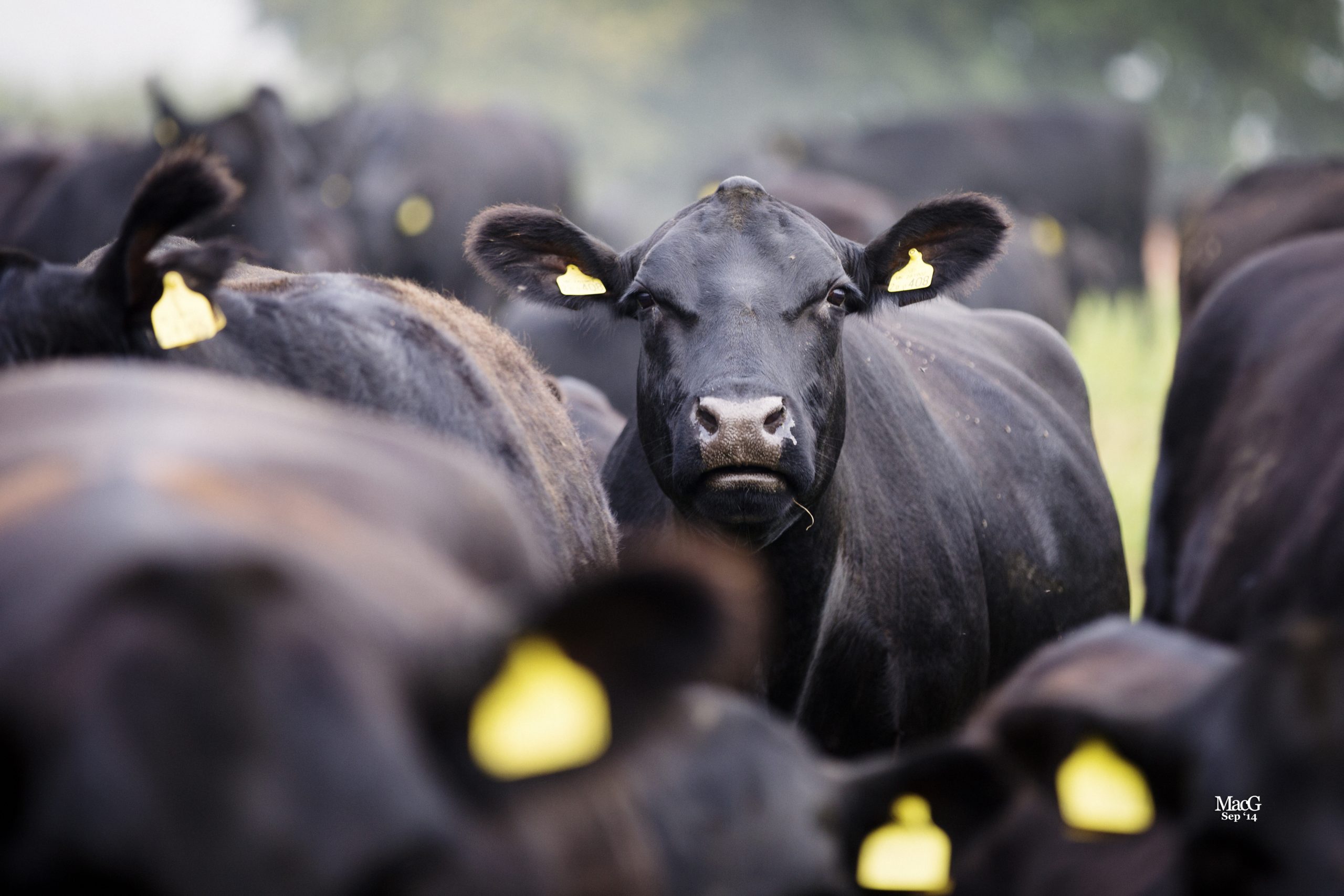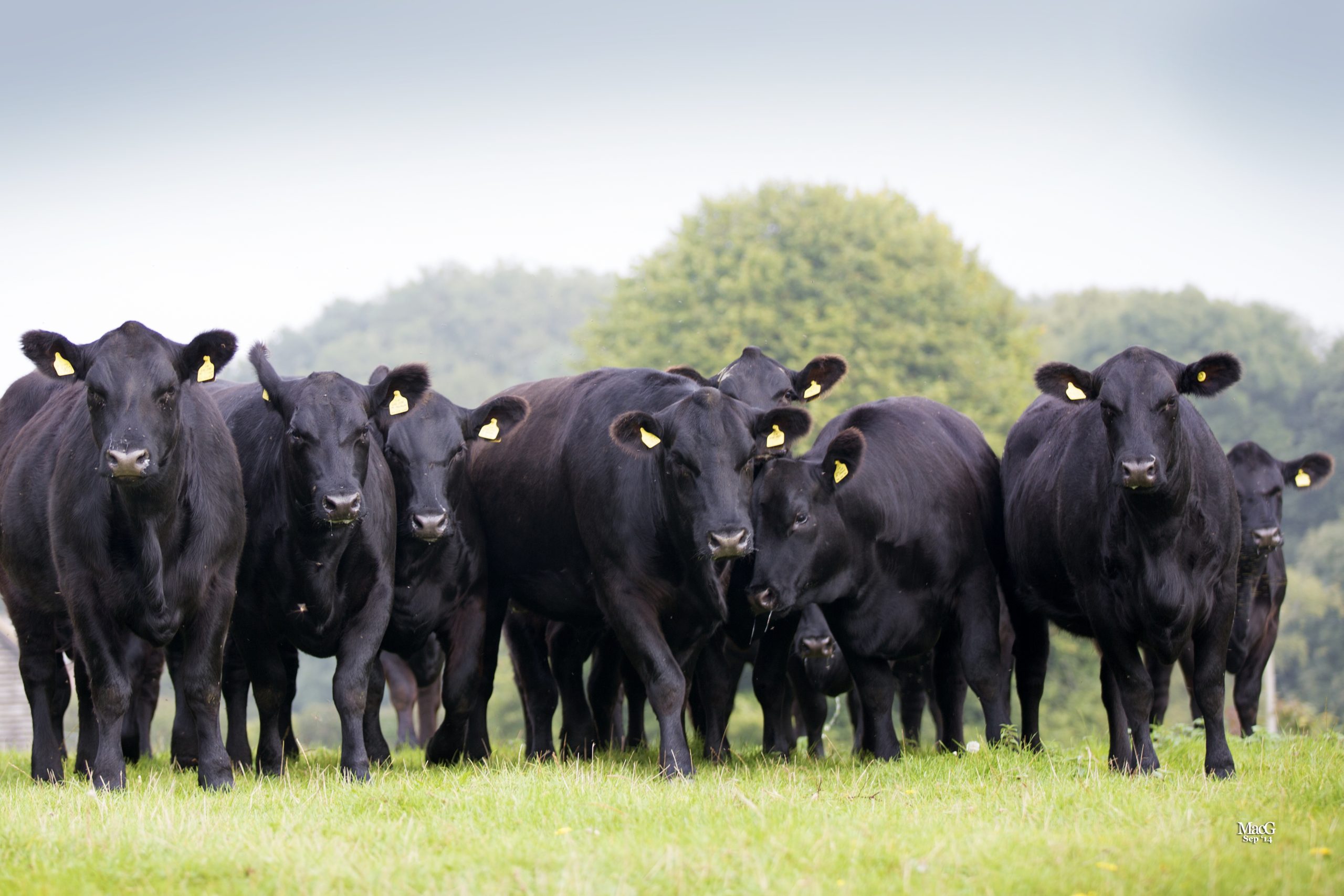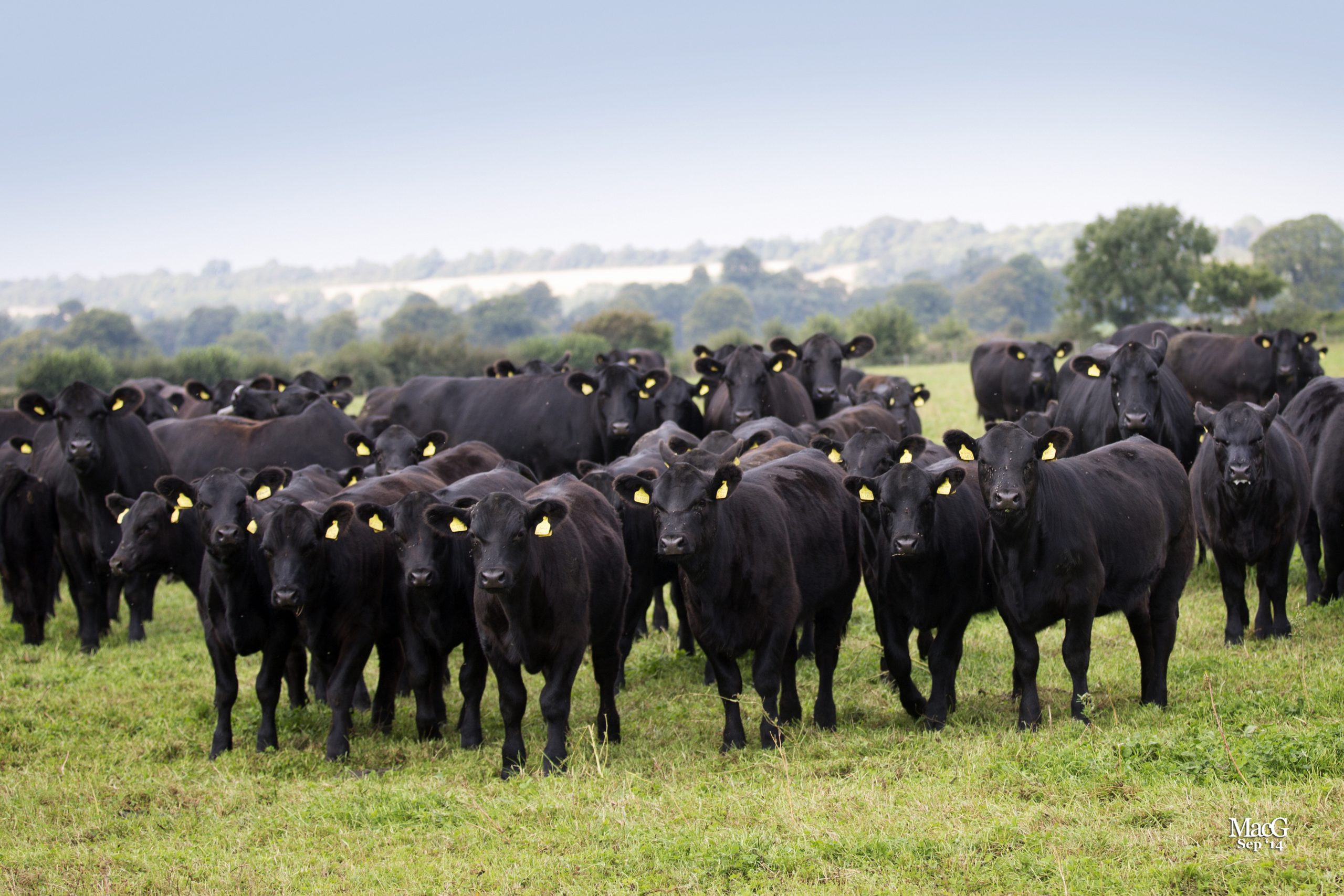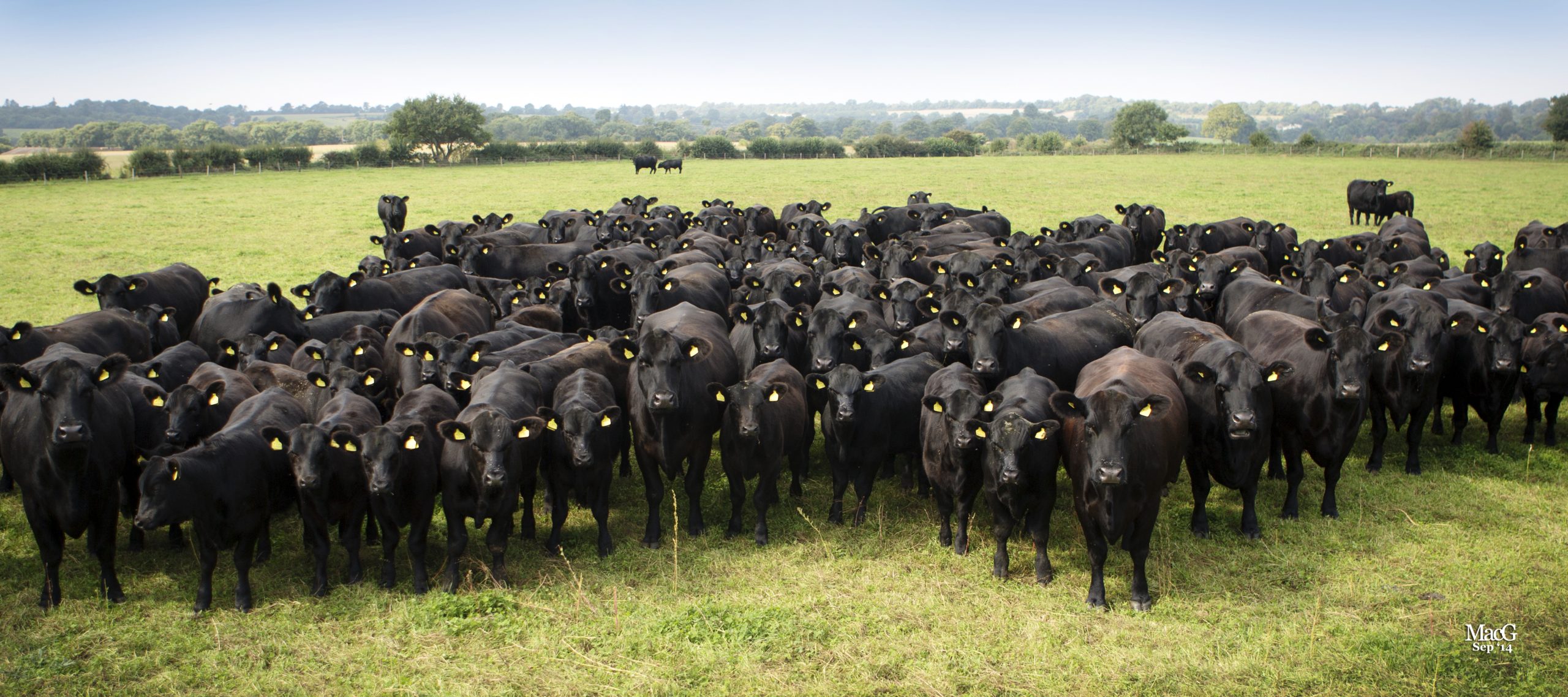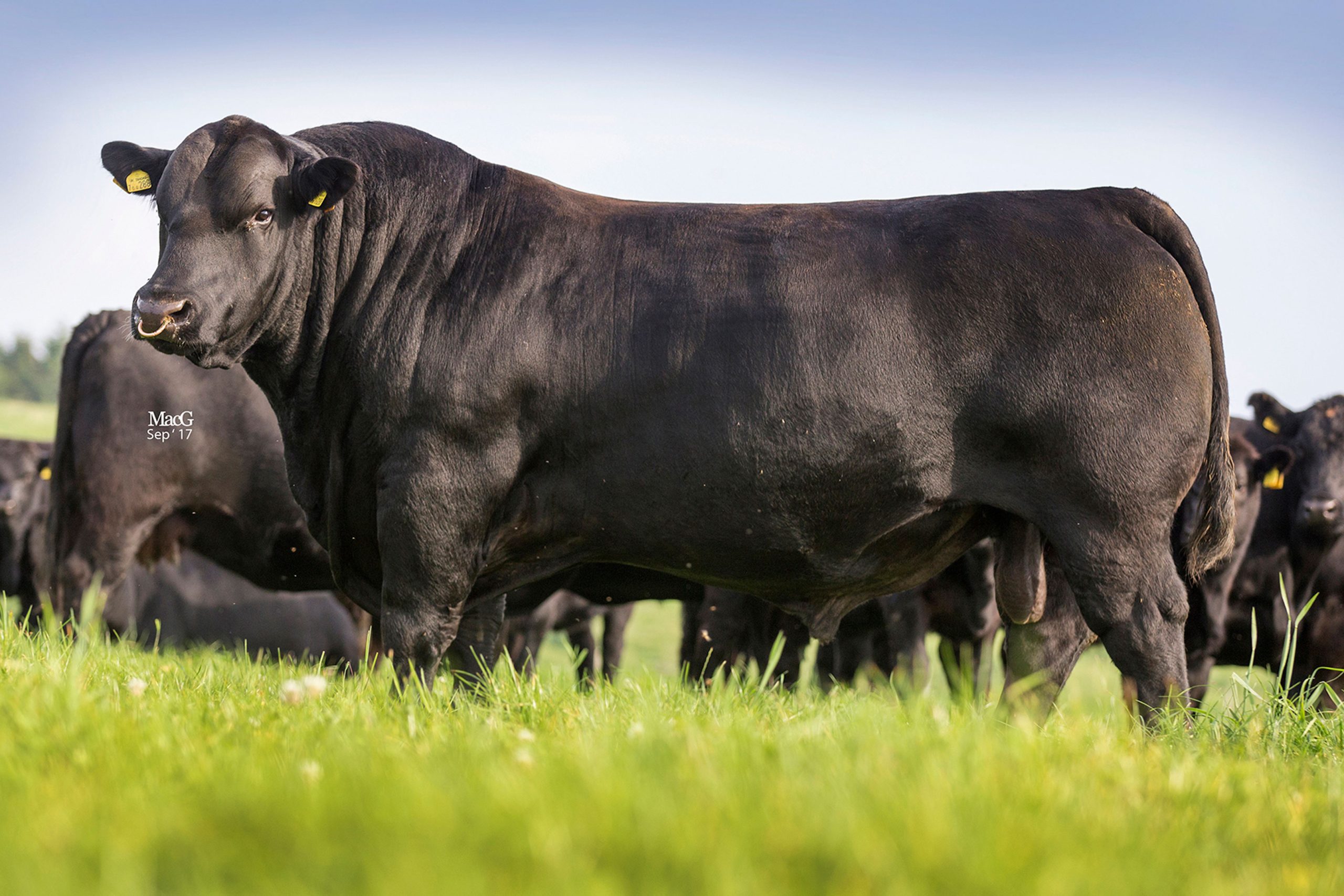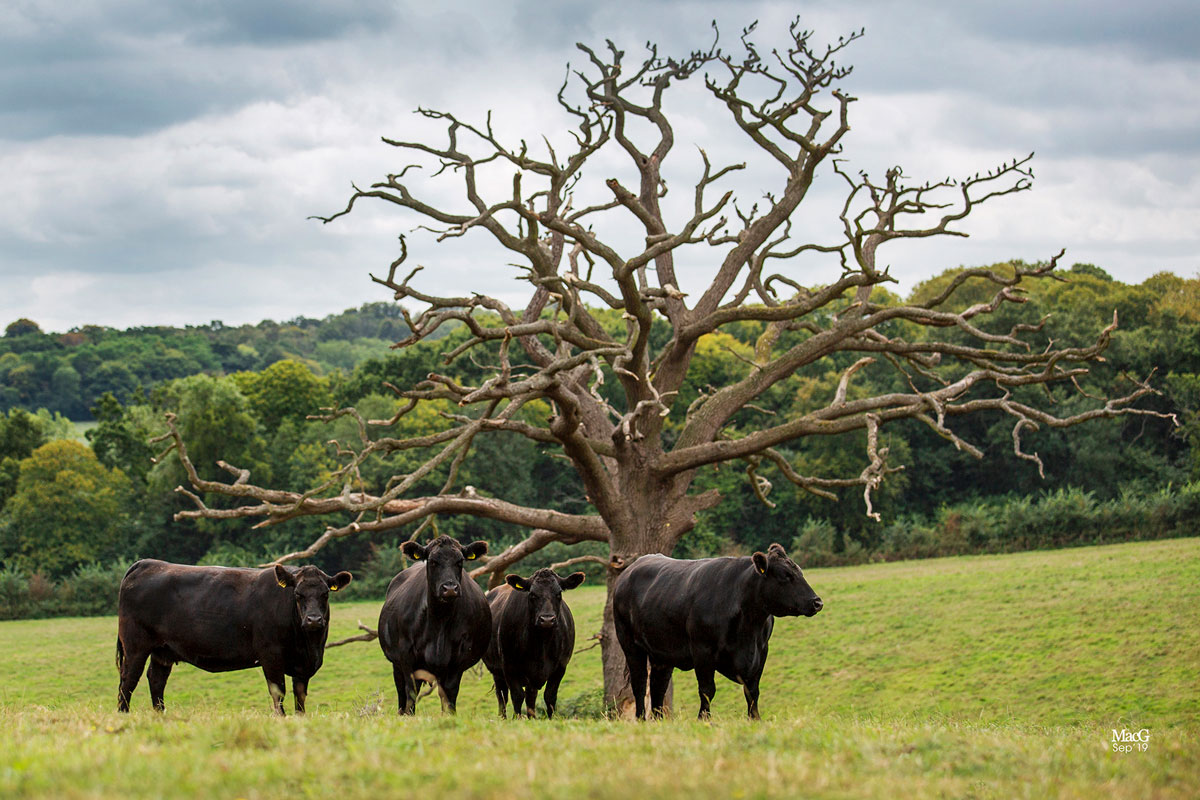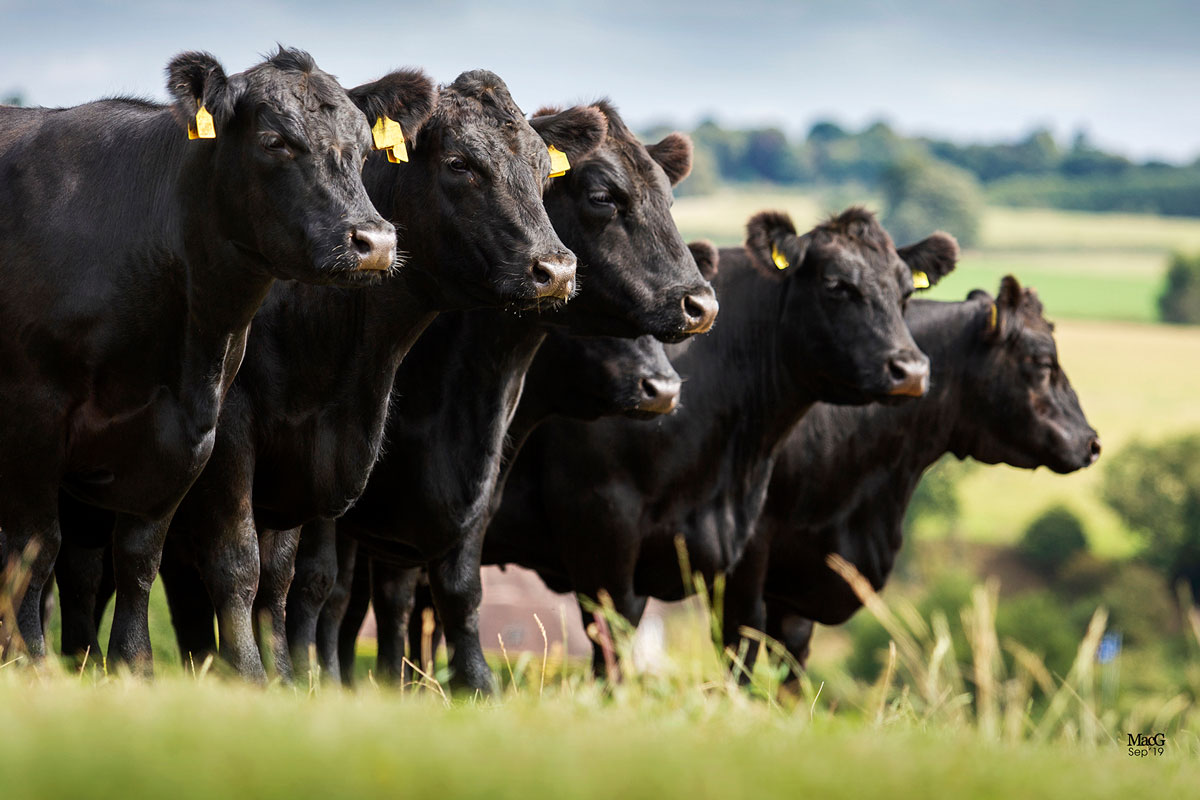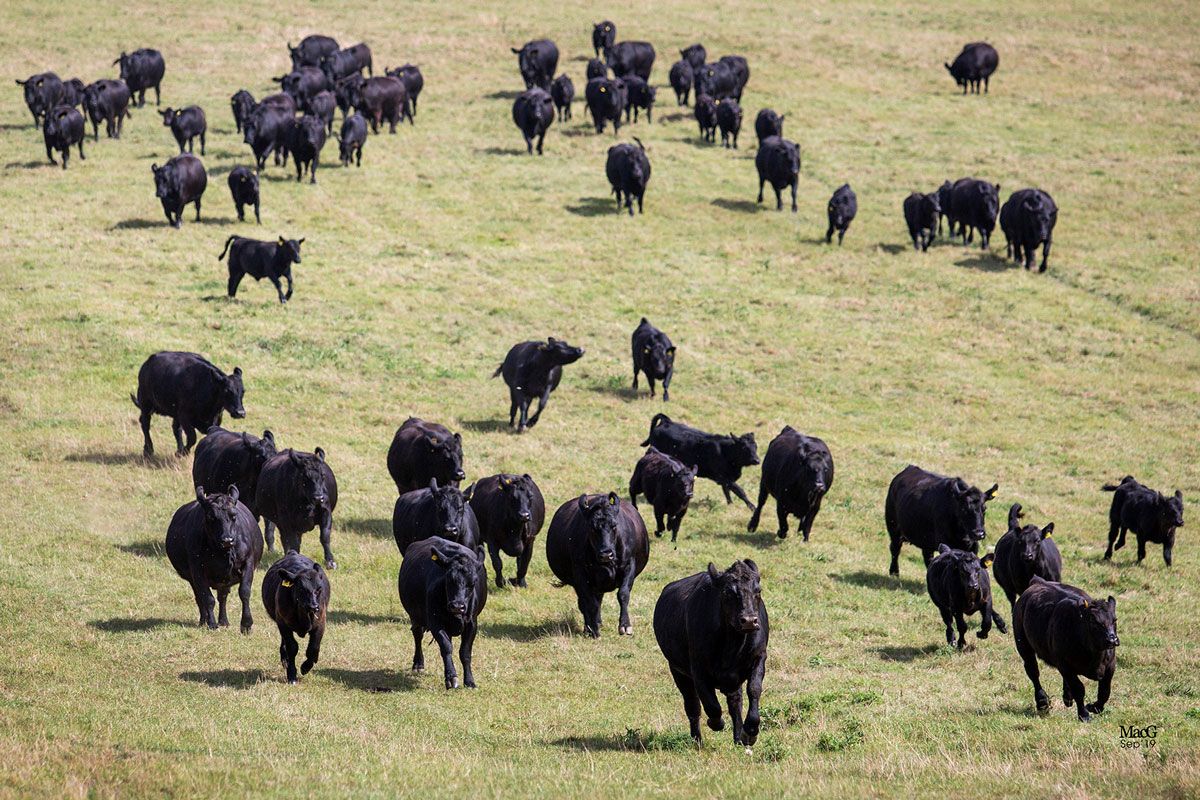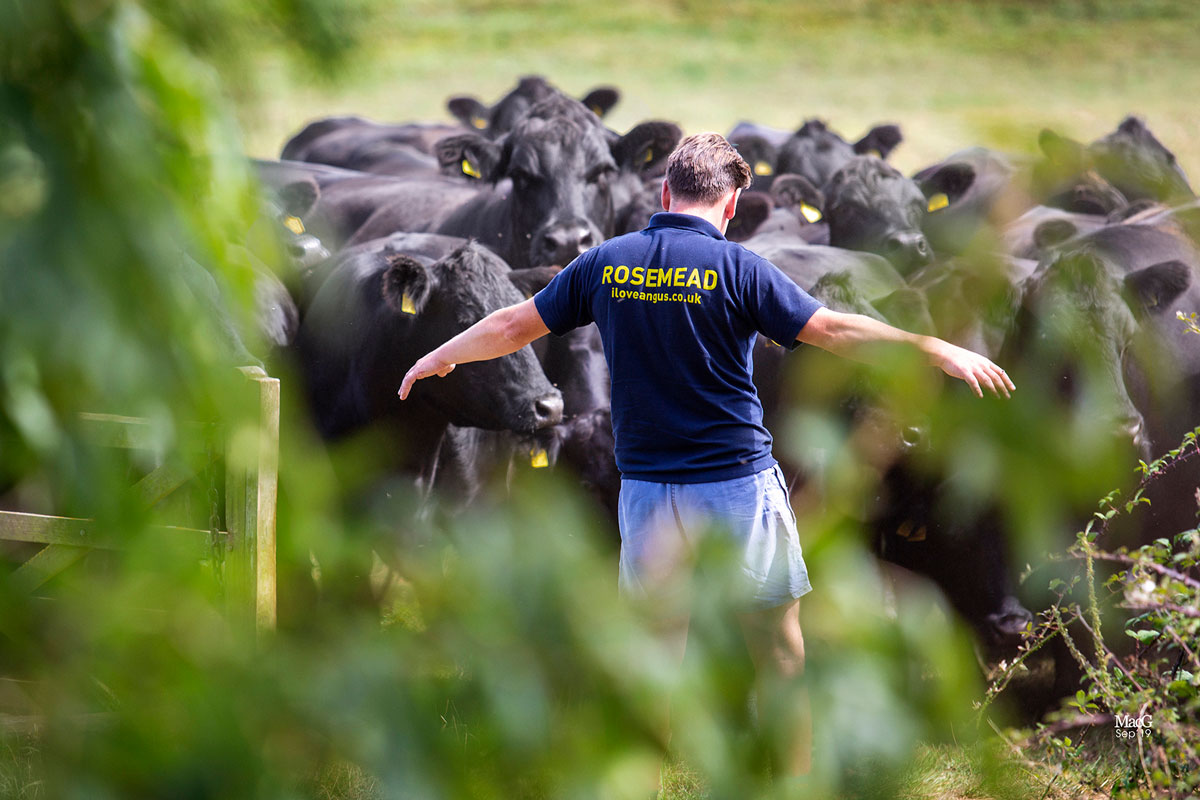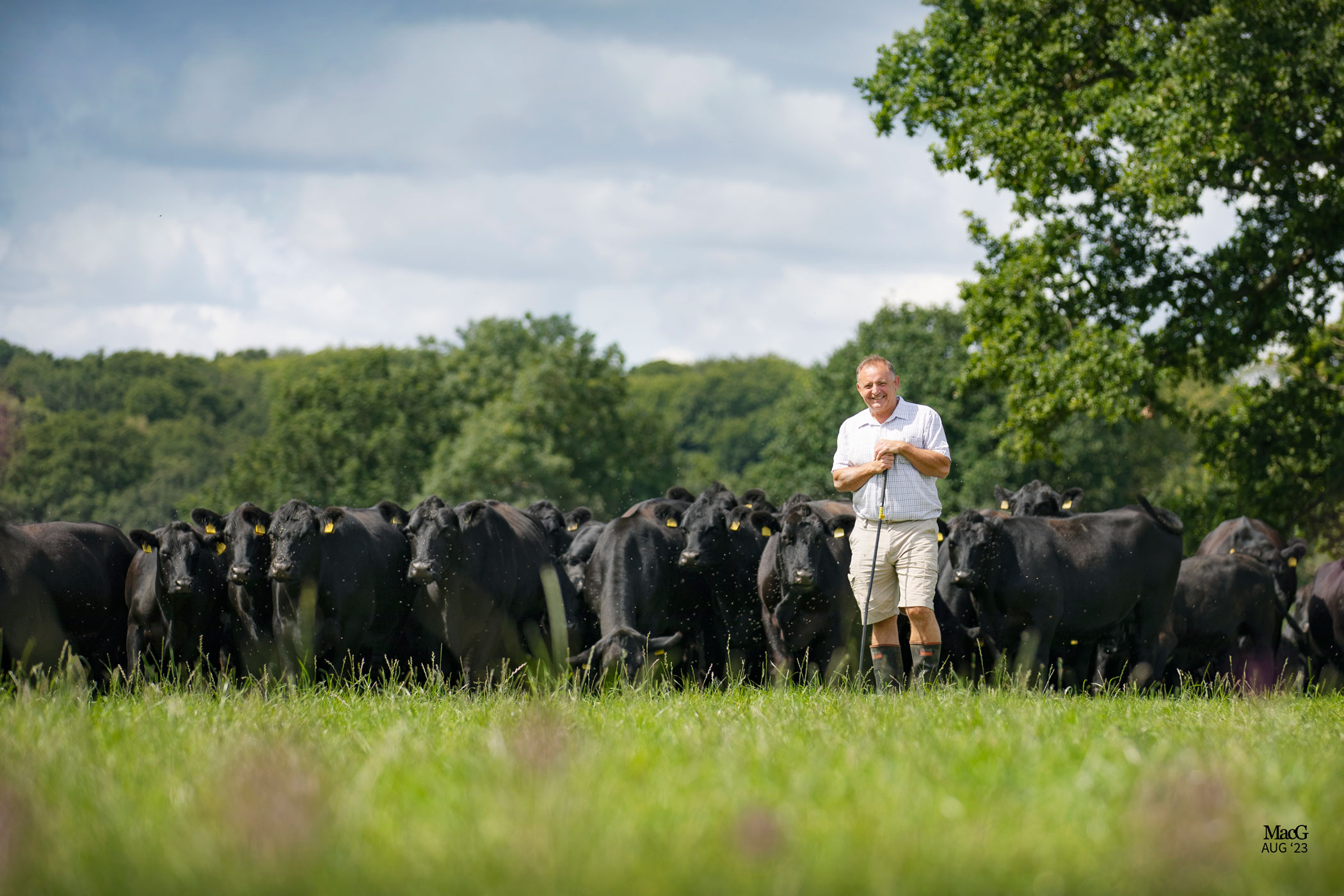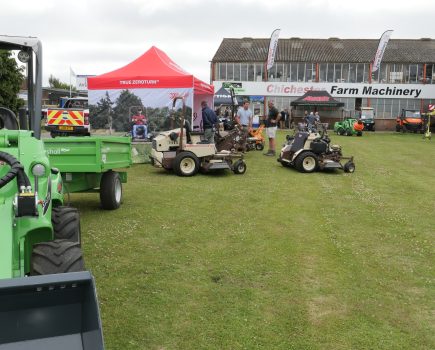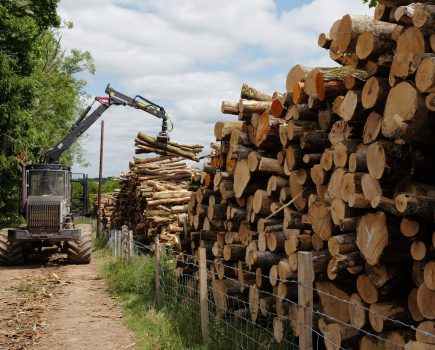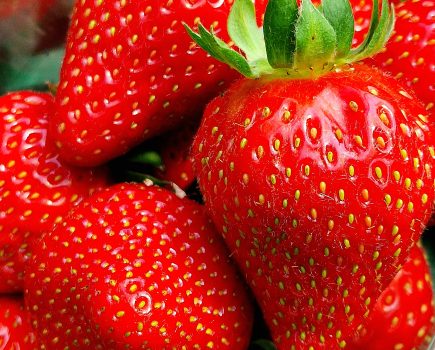This month Nigel Akehurst visits Lydling Farm in the Surrey Hills to meet Farmer and Aberdeen-Angus pedigree breeder Angus Stovold.
Arriving at Lydling Farm down a small country lane in the Surrey Hills, I drive up into the farm yard and meet Angus Stovold outside his farm office.
We head inside for a coffee and I can’t help but notice the overwhelming number of prize certificates and ribbons adorning every inch of wall and door space.
The Stovold family has been breeding Aberdeen-Angus cattle on the farm for 88 years. Angus’s grandfather Percy started the Rosemead herd in 1936, buying his first cows in Perth after realising the potential of the breed on Surrey’s light land. Initially he kept the cows hidden from his father Ernest, who questioned the viability of the breed. His father was amazed when the new herd was taken on a tour of English shows in 1938, including the Royal, winning many of them.
Percy retired in 1968 and Angus’s father Robert (Bob) carried on the family tradition before Angus took over the running of the farm in 1990.
Over the past 20 years the Aberdeen-Angus breed has gone from strength to strength in the UK, said Angus. He believes it’s a trend that is set to grow, with more cattle farmers switching away from continentals to lower-input native breeds.
Given all the other native breeds, I asked why the Aberdeen-Angus had been so successful.
“It’s the ability to produce off grass into muscular fat without having to put grain into them,” Angus replied.
“Most of the schemes are crossing into the dairy industry. They tend to eat less than a continental and they are easy calving and at the end of it you have a very marketable product,” he added.
Looking up the stats on the internet revealed that in 2022 Aberdeen-Angus cross became the UK’s most popular cattle variety measured by calf registrations on the British Cattle Movement Service, having jumped Limousin cross to first place.
It’s not just in the UK, it’s the world over, said Angus: “There’s a revolution happening in France right now – they are all going over to Aberdeen-Angus. This year I’ve judged in Germany, the Czech Republic, Kazakhstan and Scotland. Last year was Portugal, Northern Ireland and the Republic of Ireland. Everybody wants Aberdeen-Angus because they recognise what it is.”
A big part of the breed’s success can also be attributed to the Aberdeen-Angus brand. It’s become a household name and is known for its eating quality. Research carried out by Tesco showed that consumers value the Aberdeen-Angus breed more than organic certification.
Upcoming Aberdeen-Angus Youth Development Finals and Auction Day
Angus is excited to be hosting the finals of the Aberdeen-Angus Youth Development Programme (YDP) on his farm on Saturday 30 September (all with their own cattle). A former president of the Aberdeen-Angus cattle society, he explained that the YDP is all about encouraging young people aged between eight and 24 to get involved with cattle and meet like-minded people.
“It provides a great platform to learn about how to prepare cattle for sale or showing from a team of experts,” he said.
You don’t have to be an Aberdeen-Angus breeder, you just have to be ready for the challenge, he said. Anyone interested can visit the website to find out more and apply –
www.aberdeen-angus.co.uk/ydp. Some of the best YDP candidates come from non-farming backgrounds, Angus added.
The finals will see the best YDP candidates from England, Wales, Scotland and Ireland (divided into three classes – junior, intermediate and seniors) compete in front of a panel of experts for section prizes and an overall winner prize which, for the senior class, includes a large bursary.
The day-long event will be followed by a celebratory dinner hosted by the McClemens herd, a neighbouring farm to Angus.
The following day, Sunday 1 October, will see the entire heifer crop from 2022 used for the finals sold through a public auction by United Auctions in person and online from the farm, starting at 11am.
The heifers, from 23 different Rosemead lines, represent the best of those born in 2022 and would normally be retained. Included in the sale with be some of the sought-after Karlotta line (which have won two national champions and the Royal) and the Miss Beadle, another award-winning line that has not previously been sold.
All the heifers will be halter trained, quiet, and free of disease as Rosemead has an elite health status free of IBR/Johnes/BVD/LEPTO/NEOSPORA and TB.
A percentage of the sale proceeds will go to support the youth development programme.
Coffee and refreshments will be available on the Sunday and people will be allowed to come on the Saturday to have a look around and watch the young people, with viewing areas for anyone interested in the sale.
Helping prepare the heifers for the finals will be two girls from the Czech Republic, Lucie Svobodova and Sandy Liskova, who are staying on the farm. They are representing Angus Czech YDP and are accomplished stock handlers.
Proven business model
Selling breeding stock off the farm has been the mainstay of the business for more than 20 years, explained Angus, though the business also grows about 300 acres of cereals.
“We sell an awful lot of bulls and an awful lot of females,” he said.
Most of his business is return customers for both bulls and females, he added, and up until Brexit the farm was the number one exporter for genetics and breeding animals into Europe.
Angus focuses on low birth weights for easy calving, good temperament and inter muscular fat, all key characteristics of the Aberdeen-Angus breed.
Any animal that doesn’t make the grade is killed and goes for meat, he said. They kill anything with bad feet and try to keep just the cream, he explained.
“They have two chances going through the crush. If they muck around and how they exit the crush – we won’t keep them. Even the females,” he added.
“We record everything. Anything with a slightly high birth weight isn’t kept because that’s the whole character of Aberdeen-Angus – easy calving. We always sell easy-calving bulls.”
Going back ten years they had some larger 1,000kg Aberdeen-Angus cows but have culled these in favour of more productive small to medium-sized cows with an average weight of 700 to 750kg, he said.
Keen to understand ballpark figures, I asked what sort of money his breeding animals fetched.
His very best bulls can sell for upwards of £5,000, with his standard ones starting from around £2,500 for a 14 month-old animal straight off grass, he replied.
His best heifers can make similar money (£5,000), with average ones starting at £1,800 (not in calf), £2,500 (guaranteed in calf) and cow and calf around £3,000.
Anything that isn’t sold for breeding is sold direct to butcher
C H Wakelings. Cows stay out all year round and everything calves outside from January.
“That’s one of the beauties of easy calving. We can get them into a yard if it’s not very nice once they’ve calved. They are out on hills, but they are nice because whatever the angle the wind is coming from they can get in behind bushes and it’s really natural for them,” he said.
“They can leave the herd, go and find a place to calve and then bring the calf back a couple of days later. We just keep an eye on them and make sure they have calved and the calf has been up and sucked,” he added.
The free-draining ground is ideal for out wintering but not good for droughts, he said. It’s lovely soil to work and in the old days it was all market garden.
Background and move to low-input farming
Angus grew up with market gardening and the cattle went around the outside just clearing up. In the past they used to cross the Aberdeen-Angus with a Charolais to get a bigger carcass, he said.
“You would get £200 more for a Charolais cross Angus than for a pure Angus. Naturally that’s what everyone did. We kept a small nucleus of Aberdeen-Angus and we had a very good pig farm supplying a lot of local butchers. We had a good reputation for quality pork and when I took over in 1990 I felt that the natural thing to do was to go to a pure Angus,” he said.
He started building up the Angus and got rid of the Charolais, even though they were getting more for the Charolais. Then in 1996, when BSE hit, they had a pure pedigree Aberdeen-Angus herd which never had BSE offering a great solution for the growing organic market.
“So we sold so many heifers back to the organic people and of course that’s how it all built up,” he said.
By 2000 he was up to about 250 cows and then Foot and Mouth Disease hit, which “screwed us like it screwed everybody”. They didn’t get it, but they couldn’t sell anything for about six months – which really hurt. They got over that, reduced the herd down to about 170 and started doing well and then in 2007 the disease struck again. At the time they were running about seven different farms and it cost them a huge amount, though they didn’t lose any cattle, he said.
From then onwards they’ve been “a bit more careful” and across the two herds they run about 150 cows and plan to reduce this down to a nucleus of 120.
Part of this reduction in numbers is due to an increasing focus on the environment and getting a better balance. He added that they were slowly moving towards a 100% Pasture for Life system.
Conservation, Regenerative Farming and Farming Cluster Group
Angus doesn’t apply any artificial fertilisers or use any sprays. He is a lifelong wildlife and bird enthusiast and previous chairman of Surrey and Hampshire Farming & Wildlife Advisory Group (1998-2009).
Over the past five years he has planted more than 3.5km of new hedges across the farm and has six metre Countryside Stewardship margins around all his arable fields to create corridors in which wildlife can move around.
All the arable ground is on a rotation to help attract corn buntings. They were on the farm last winter, the first time they have been seen in Surrey in 43 years.
All the hedgerows are cut on a three-yearly basis to help food sources during the winter. They also leave areas of thistles for winter food and they have put up lots of bird and bat boxes.
“Everything we’re trying to do is to make space for nature and still farm a really good product,” Angus explained.
He likes the idea of adaptive multi-paddock (AMP) grazing but isn’t keen on setting up electric fences, so is planning to wait for collar technology to come down in cost.
The actions they have taken, plus others, have helped to steadily increase bird numbers and varieties of breeds.
The farm is also part of a Farming In a Protected Landscape facilitation fund farm cluster called the Greensands Farmer Cluster which links them and a number of neighbouring farms to some important heathland.
He hopes that by the time he retires in five or six years’ time he will be able to hand on something that is really integrated with regenerative farming.
There is more about the farm and the Rosemead Aberdeen Angus herd at www.aberdeenangus.co.uk
Climate change and consolidation in the meat processing industry
Angus has found the dry summers challenging. Last summer’s drought caused their grass to burn off.
“It just couldn’t grow because we’re on sand here and there was no water,” he said.
It meant they were forced to feed hay and silage through the summer and just managed to get through winter, but the barns were empty. Angus is now planning to reduce the herd size to give them a bit more resilience.
Angus also worries about further consolidation in the meat processing industry, as seen by the recent acquisition of two Scotbeef meat plants by ABP. Will less competition mean lower prices for primary producers, many of whom are already struggling to make a profit, he wonders?
Future
Despite the challenges, he is positive about the outlook for livestock farmers in the UK and his own family farm. His son Finn has just returned from eight months working on a farm in Kenya and is keen to get involved. Angus wants Finn to gain more experience working on other farms in the UK with a focus on conservation and alternative ideas and would love South East Farmer readers to get in touch if they have any ideas.
Farm and farmer facts
- Senior partner in family farming business established in 1880
- 2004 to 2006 chairman of Surrey National Farmers Union
- 1998 to 2009 chairman of Surrey and Hampshire Farming & Wildlife Advisory Group
- Former president of the Aberdeen-Angus Cattle Society
- Former chairman of Royal Smithfield Club
- 150 suckler cows split into two herds, all extensively grazed
- 600-acre home family farm split into 300 acres of arable crops and 300 acres of grassland
- 200-acre grassland farm rented nearby in Comptom
- Farm on greensand soil, which is free draining and allows cattle to be out wintered.
- Calve outside from January
- Full time stock man Tom Beadle supported by Oscar Harvey on a summer placement and Angus’s son Finn
- Planted 3.5km of hedgerows and fenced off all the footpaths on the farm
- Countryside Stewardship Mid-Tier (wild flower margin, bumblebird mix, nectar mix, winter bird food mix and beetle banks)
- Member of Facilitation Fund Greensands Farm Cluster
- Uses local contractors to carry out all tractor work (including arable, hay and silage making)
- Plan to go Pasture for Life in the future
For more like this, sign up for the FREE South East Farmer e-newsletter here and receive all the latest farming news, reviews and insight straight to your inbox.

